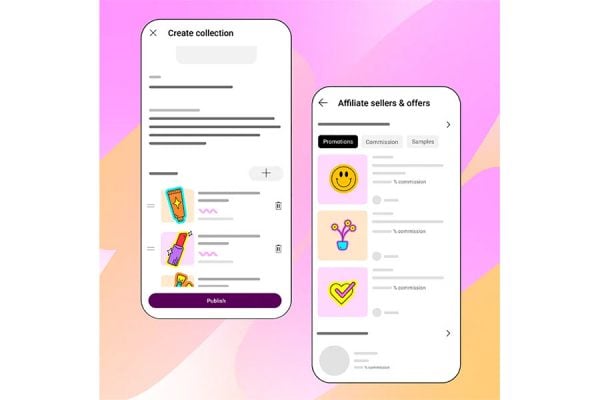Research the IMRG and NetDespatch, the leading parcel data management platform, quantified the cost of failed deliveries for the online retail industry, looking at the financial impact for the three main groups involved – shoppers, retailers and carriers.
While there may be any number of reasons as to why a customer’s home delivery expectations may not be met, this research focussed on the four most common delivery failure scenarios:
- Failed first delivery – re-delivery required
- Failed first delivery – collection by customer
- Late delivery – not within the expected time window
- Order lost – replacement sent
IMRG and NetDespatch estimated the cost of failed first-time, on-time, every-time delivery for all three groups combined to be more than £1.6bn in 2018.
Have failed deliveries rates improved?
Statistically-speaking, the answer is yes but the actual picture is more complex. In the IMRG MetaPack UK Delivery Index, one of the metrics tracked is the level of attempted (or carded) delivery. In 2014 this averaged 4.65%. The rolling average over the most recent 12 months (Mar 18 to Feb 19) is 2.77%; a substantial improvement.
A core reason for this improvement is likely to be related to the introduction of new solutions over the intervening years. There is of course always a lag between solutions coming to market and adoption by retailers / customers but, as time moves on, the ones that gain traction can start to enhance efficiency and the customer experience.
Some of the most important improvements have enabled greater visibility of order movements and more dynamic control of delivery operations, meaning delivery times can now be more accurately predicted and communicated to the customer. In some cases, customers also have the option to defer delivery to a more convenient time or place and, of course, use of alternative click and collect locations has become far more popular.
In spite of such innovations and technologies, the cost of failed ‘first-time, on-time, every-time’ delivery remains high because shopper expectations tend to increase in line with (or, in many cases, faster than) retailer adoption of them.
The move toward faster deliver
One of the main challenges with delivery is that it has sped up considerably in recent years. Whether this is something that people specifically want – or is something they are being told they can have – is a moot point, but the shift is clear to see.
In the IMRG-MetaPack index, the percentage of orders being sent specified-day / next-day has increased from 43.9% of all UK-delivered volume in July 2016 to 50.2% in July 2018. That might not sound like much, but it means carriers were expected to deliver about 580 million next-day deliveries in 2018, compared with 450 million in 2016. This brings challenges because economy services typically allow for a 2- to 3-day delivery window, with some in-built contingency, while next-day only allows perhaps a 12-hour delivery window, with very little available contingency.
How can the risk of failed deliveries be reduced?
Here are three possible focus areas for how the risk of failed deliveries could be reduced.
-
Encourage collection over receipt
In the UK, we have a culture of home delivery; almost 80% of respondents to a survey IMRG ran in 2018 with GFS and maru/EDR said that home was their preferred delivery location. The main issue with this is that most people are not at home during the day, when their deliveries are likely to arrive.
The pressure to deliver on-time in line with expectation means a portion of parcels are fulfilled to a ‘safe space’; some are elected by the customer, but in many cases this means it has been left with a neighbour. This may technically reduce failed deliveries, but it’s also quite annoying for people to have to continually apologise to their neighbours for taking their parcels in. From the perspective of customer experience, it cannot be considered a long-term solution.
Connecting people to their parcel is the aim of delivery; incentivising greater use of click and collect so customers are more focused on collecting rather than receiving their orders – and hence have more control over the process – may provide opportunities to reduce failed deliveries. This would require the evolution of the click and collect infrastructure, but the benefits seem to support it.
-
In-transit data
Another solution would be greater adoption and use of in-transit data, so customers have clear visibility of where their orders are – probably supported by text message updates at key points – and increase their chances of being available (or having someone available) to accept receipt of the parcel at the exact moment of delivery.
While WISMO (where is my order) functionality is not yet widely adopted, it does seem an inevitable route down which technology may develop, becoming cheaper to implement and offer over time. -
Putting the customer in control of their delivery
Instead of automatically giving customers a next-day delivery option, retailers need to make the customer the centre of the delivery process. One way of doing this is allowing customers to be able to choose their own delivery window. If customers are able to choose their desired time window for their delivery, it automatically makes the delivery process more convenient for them and can potentially reduce the risk of a failed first-time delivery.
From the point of order through to the fulfilment lifecycle, regular communication between the customer and the courier is key to increase the chances of a successful first-time delivery. This is because the customer can ensure that they are at home during their requested time slot, or if their plans change, they are able to notify the courier and update their preference for a different delivery slot.











17 Responses
All very well putting more onto the seller, but to be completely honest as a online retailer i can safely say most of our failed deliveries are simply down to the customers lack of thought. Recently we had an item back where the buyer wasn’t in 3 times, then it came back to us at extra cost! Finally got a reply from the buyer a week later… went on holiday the day after buying it…
Another said it wasn’t their fault that they weren’t in as they decided to go out as it was a nice day…
Yesterday i was informed by a customer that they didn’t know when it was coming so made no plans to be in. It was a next day service, the delivery date was shown on ordering and they declined to give either an email or phone number for a time slot notification… Obviously our fault.
Put wrong address? No problem, that will obviously be our fault !
Then there are the ‘not in’s’ so they arrange a redelivery… and fail to be in for that too. Sometimes twice.
So yes…. please tell the seller to do more. Or maybe just get people to actually think. This is the result of the ‘free delivery – free return’ culture that so many have fallen over themself to provide. Why think when the seller will pick up the tab.
chip every package with a gps tracker ?
Parcelhub reduce delivery failures with their clever software, alerts and customer communication.
for about the 10th time this week I have just been accused of providing bad customer service – by a customer who provided an address with no one home during day.
This is a persistent and consistent problem. I feel sorry for the delivery drivers – especially those who are self employed and are paid per package. Many drivers leave safe and then get blamed for that too.
Buyers – supply an address where there is someone home to receive the package.
Why do customers give delivery addresses when there is no one home? Then blame me?!
Big issue that needs to be addresses by educating the customer.
We have stopped jumping through the eBay delivery metric hoop. Too much going on in life and on other business platforms to worry about a flawed system completely stacked against the honest seller.
@ Alan Paterson, how can I circumvent this? My metrics are horrible at the moment. How are sellers manipulating the figures ?
@ Tyler… thank you for your support
@ Dennis … I really must remember to phone ebay and get 15 years back pay. I’m off to find my P60. I seem to remember seeing it in 2003.
We all work for ebay